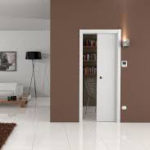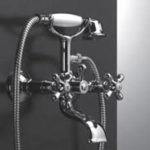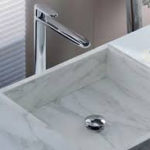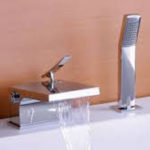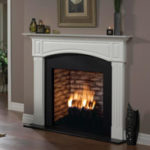Contents:
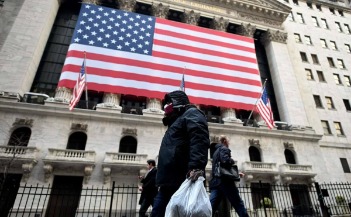
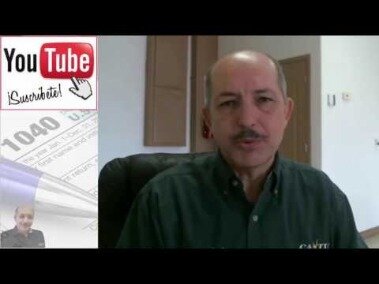
List the steps involved in calculating the manufacturing overhead costs. A fixed cost is a cost that does not vary with the level of production or sales. Marginal cost is strictly an internal reporting calculation that is not required for external financial reporting. Publicly-facing financial statements are not required to disclose marginal cost figures, and the calculations are simply used by internal management to devise strategies.
Following the cost principle also leads to the non-recognition of self-generated intangible assets like goodwill, brand name, and loyalty. They are built over time and not acquired or built by incurring a cost. Since they do not have initial costs, they cannot be recorded on the company’s balance sheet due to the cost principle. The cost principle is mostly appropriate for short term assets as the business unit does not keep them for too long, and their value doesn’t change that swiftly before they are sold. The principle is not justifiable for financial assets where the value has to be adjusted to the market value at the end of each year. It is also not appropriate for long term assets as the concept does not allow for upward revaluation of these assets, and they will never show actual market value in the long term.
How Cost Principle Works
Cash FlowCash Flow is the amount of cash or cash equivalent generated & consumed by a Company over a given period. It proves to be a prerequisite for analyzing the business’s strength, profitability, & scope for betterment. Generally Accepted Accounting Principles GAAP are standardized guidelines for accounting and financial reporting.
Long-run costs are those costs that are concerned with the long-run process of production. In the long run, all the factors of production are variable and even the scale of production can be changed. All the costs during the long run are variable costs and no cost is a fixed cost.
Cost-volume-profit analysis is based entirely on unit costs. Costing a product involves a number of factors before it comes an expense. Explain the various steps to be considered and how they apply to the cost role up costing of the product. A cost’s classification as direct or indirect will depend on the cost object.

The book value of financial investments is required to be adjusted to their market value at the end of each year. The so-called resources are expressed in terms of money or monetary units. What we stated above will not be a meaningful one until the same is used with an adjective only, i.e. when it communicates the meaning for which it is intended.
For example, repair of buildings, painting and whitewashing, purchasing new furniture in place of old furniture and labour welfare activities, etc. This concept applies to all types of industries and all factors of production. The quantity of factors of production remains constant, in a certain time period.
Merchandising business: Product and period cost classifications
Marginal revenue is the incremental gain produced by selling an additional unit. It follows the law of diminishing returns, eroding as output levels increase. Consider the warehouse for a manufacturer of landscaping equipment. The warehouse has capacity to store 100 extra-large riding lawnmowers. The margin cost to manufacture the 98th, 99th, or 100th riding lawnmower may not vary too widely.
- Differential Cost is that portion of the cost of a function attributable to and identifiable with an added feature, i.e. the change in costs as a result of change in the level of activity or method of production.
- Sunk costs are those costs that are not affected by the changes in the level of business activity or nature of business of a business firm.
- In other words while doing so the firm gives up/rejects the next best option for investing the funds.
- In other words, in the long run, progressively fewer units of output will be yielded by additional inputs of variable costs.
The actual expenses of individuals/ firms in the market can be termed as private cost. Thus for a business firm this may include expenses like Cost of raw material, salaries and Wages, Rent, Various overhead expenses etc. For an individual his/her private expenses can be expenses on food, rent of house, expenses on clothing, expenses on travel, expenses on entertainment etc can be considered as Private Costs. Real Cost of production or business operation includes all such expenses/costs of business which may or may not involve actual monetary expenditure. Economic cost includes all the accounting expenses and the Opportunity cost or implicit cost of the business.
Types of accounting costs
While assessing the profitability of a proposed change, the incremental costs are related to incremental revenues. It is a sum total of the Total Fixed Price and the Total variable cost. For example, Big Drink likely pays a minimum charge regardless of how much electricity is used. This minimum charge is fixed because it does not change depending on actual usage.
Therefore, if a balance sheet shows an asset at a certain value, it should be assumed that this is its cost unless it is categorically stated otherwise. The Structured Query Language comprises several different data types that allow it to store different types of information… Assets that are to be converted into the cash shortly must be listed at the current market value.
What Is the Difference Between Marginal Cost and Average Cost?
For instance, if the revaluation is made, the following journal entry is posted in the accounting system. Cost Concepts Impact of Computers on Manufacturing Impact of Computers on Manufacturing Computer-aided design involves the use of computers to design products. Get all the important information related to the CBSE Class 11 Exam including the process of application, important calendar dates, eligibility criteria, exam centers etc. Choice of alternative resulting in decreased cost, such decrease in cost is called Decremental Cost.
When Bills of Material Hinder Product Development – ENGINEERING.com
When Bills of Material Hinder Product Development.
Posted: Thu, 20 Apr 2023 23:31:38 GMT [source]
This cost is shown by an accountant in his balance sheet at the original cost of a machine rather than the present cost prevailing in the market or market cost of the machine. Replacement cost plays an important role in business decision making because it affects the total cost of a business firm. A traditional income statement is primarily used for financial reporting purposes.
Explain what would be bookkeeping servicesd in the entry to record actual Manufacturing Overhead costs incurred in a process department. Is the computer paper used in an accounting firm classified as a product cost or a period cost? Using the Fundamentals of Product and Service Costing, explain how a basic product costing system is used to calculate product or service costs. Marginal analysis is an examination of the additional benefits of an activity when compared with the additional costs of that activity.
The purpose of using the cost principle method is to maintain reliable information across financial documents and provide consistency in verifying an asset’s cost at the time of purchase. Some assets must be recorded on the balance sheet using fair value accounting or at their market price. These are typically short term assets located in the current asset portion of the balance sheet. Recording these assets at market price is important as it shows a more accurate value of what the company would receive if they were sold immediately. Accounting Cost includes all such business expenses that are recorded in the book of accounts of a business firm as acceptable business expenses. Such expenses include expenses like Cost of Raw Material, Wages and Salaries, Various Direct and Indirect business Overheads, Depreciation, Taxes etc.
Create a file for external citation management software
In many ways, a company may be at a disadvantage by disclosing their marginal cost. Marginal cost is often graphically depicted as a relationship between marginal revenue and average cost. The marginal cost slope will vary across company and product, but it is often a “U” shaped curve that initially decreases as efficiency is realized only to later potentially exponentially increase. Suppose a company bought an office building worth $5 million 10 years ago, with its current market value is $30 million. Its balance sheet will still record this tangible asset at the original price of $5 million. The increase in the price of the office building signals that the future market value is likely to rise, potentially attracting more people to rent or buy different floors as their office premises.
Notably, since assets are recorded at the cost of acquisition, any future increase or decrease in their values is not recorded in the balance sheet. However, an exception to this rule is the diminution in value that may arise from the depreciation of assets. Despite its limitations, the cost concept of accounting is regarded as the best option when compared to the available alternatives. Cost concept or cost principle states that all procurement’s namely assets or materials, are to be reported and maintained in books at cost.
$368 billion leagues under the sea: The Opportunity Cost of staying … – Independent Australia
$368 billion leagues under the sea: The Opportunity Cost of staying ….
Posted: Thu, 20 Apr 2023 02:00:42 GMT [source]
For example, the lease of a building will not vary, irrespective of the revenues of a business housed within that facility. Indirect costs or untraceable costs are costs that cannot be attached to a specific good, service, or operation. Indirect costs have some indirect relationship with production and it may vary with output.
When such business expenses or accounting expenses are deducted from the Sales income of any firm the accounting profit is obtained. Such Accounting/Business expenses or costs are also termed as Explicit Costs. The historical cost principle is important because it allows businesses to track the value of their assets over time, even if that value changes. This principle helps ensure that companies are not taking advantage of changing market values to inflate their financial statements. The historical cost principle is one of the basic concepts of accounting and bookkeeping.
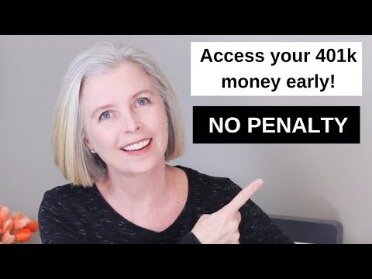
To elaborate on this concept, if an asset does not cost anything (i.e., no money is paid for its acquisition), it would not be recorded in the company’s books. Depreciation expense is used to reduce the value of the assets over their useful life. It is relatively easy to retrieve the original cost of an asset, provided records were kept. Trade, sales, or purchase documentation are used to determine the historical cost of an asset. However, it is important to know that the historical cost may not necessarily be a true reflection of the fair value of an asset. Liabilities issued by firms in exchange for services and goods are reported at their cost.
US Space Force evaluates Aussie space-junk fuel concept. – Cosmos
US Space Force evaluates Aussie space-junk fuel concept..
Posted: Fri, 21 Apr 2023 12:30:00 GMT [source]
The term used to describe the cost of materials that are an integral part of total product cost is _____. Identify and explain the costs that should be included in inventory and the cost of goods sold. Explain the concept of cost allocation as it pertains to property, plant, and equipment and intangible assets. Describe the fundamental cost-flow assumptions of the average cost, FIFO, and LIFO inventory cost-flow methods. Break-even analysis calculates a margin of safety where an asset price, or a firm’s revenues, can fall and still stay above the break-even point.
As we keep on charging depreciation, the unrealized gain keeps on decreasing and being realized. However, it’s limited to additional depreciation due to revaluation. Monopoly is at the opposite pole from perfect competition. A Perfect monopoly exists when a unique product or service is only available from a single supplier and that vendor can prevent the entry of all others into the market. Most general economic principles are stated for situations in which perfect competition exists. Perfect competition occurs in a situation in which any given product is supplied by a large number of vendors and there is no restriction on additional suppliers entering the market.
















































